On a recent MCG (Malaysia Cultural Group) tour we visited a palm  plantation on the Jendarata Estate near the town of Telek Intan, in the state of Perek. We were met at the plantation by the Vice Chairman and Chief Executive Director, Dato Carl Bek-Nielsen. After introductions,
plantation on the Jendarata Estate near the town of Telek Intan, in the state of Perek. We were met at the plantation by the Vice Chairman and Chief Executive Director, Dato Carl Bek-Nielsen. After introductions,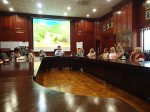 snacks and coffee, Carl gave a presentation in the conference room. Afterwards he conducted a tour of all areas of the operation.
snacks and coffee, Carl gave a presentation in the conference room. Afterwards he conducted a tour of all areas of the operation.
United Plantations Berhad is recognized as one of the highest yielding, cost-competitive and innovative palm plantation companies in Malaysia. In 2008 it was awarded the world’s first certified producer of sustainable palm oil by The Roundtable on Sustainable Palm Oil, (RSPO).
What started out in 1906 as the Jendarata Rubber Estate, moved on to coconuts and palm oil production when the rubber slump hit Malaysia in 1921. The founder was from Denmark and to this day the business is still run by Danes not only efficiently, but also in a green and sustainable manner.
United Plantations Berhad have a few properties in Malaysia as well as a 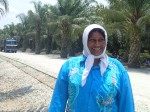 couple in Indonesia. Overall there are over 6,000 employees but the
couple in Indonesia. Overall there are over 6,000 employees but the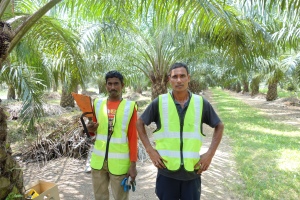 Jendarata Estate plantation has 1,200 staff. 80% of these are foreigners from Indonesia, Bangladesh and India who work mostly as field workers. This job pays salaries above the minimum wage, but for some strange reason most Malaysians don’t want to work on a palm plantation in this role.
Jendarata Estate plantation has 1,200 staff. 80% of these are foreigners from Indonesia, Bangladesh and India who work mostly as field workers. This job pays salaries above the minimum wage, but for some strange reason most Malaysians don’t want to work on a palm plantation in this role.  (Malaysians make up the bulk of the professional technical and administrative staff. The 58,000 hectare plantation is self-contained and the employees live in well maintained homes. In addition to the accommodations they
(Malaysians make up the bulk of the professional technical and administrative staff. The 58,000 hectare plantation is self-contained and the employees live in well maintained homes. In addition to the accommodations they 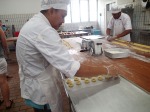 receive free water, electricity, medical care and education for their children up to 6th grade. There are two hospitals on the plantation as well as an ‘old
receive free water, electricity, medical care and education for their children up to 6th grade. There are two hospitals on the plantation as well as an ‘old folks’ home’ where Malaysian workers’ parents can spend the rest of their days in comfort and be close to their working children. Religious needs are met with a mosque, Hindu temple and churches on site.
folks’ home’ where Malaysian workers’ parents can spend the rest of their days in comfort and be close to their working children. Religious needs are met with a mosque, Hindu temple and churches on site.  There are aircraft runways and even a Danish Bakery here, which our tour leader, Carl was proud to point out. His father was responsible for bringing the bakery to the plantation after hearing complaints about terrible local bread.
There are aircraft runways and even a Danish Bakery here, which our tour leader, Carl was proud to point out. His father was responsible for bringing the bakery to the plantation after hearing complaints about terrible local bread.
Workers in the palm groves cut the ripe bunches of palm fruitlets from the trees and they are then loaded onto trailers pulled by tractors or water buffalo. Every two weeks a palm tree will yield 12 to 14 bunches of ripe fruitlets. Once harvested, the palm bunches are then transferred to rail cars. The plantation has over 525 kilometres of railway track and uses a locomotive system for getting the fresh fruit bunches (FFBs) to the mill efficiently and with as few bruises as possible. Upon arriving at the mill, the rail cars full of FFBs are perfectly fitted to enter the boilers where the process will begin for the palm oil extraction.
fruitlets. Once harvested, the palm bunches are then transferred to rail cars. The plantation has over 525 kilometres of railway track and uses a locomotive system for getting the fresh fruit bunches (FFBs) to the mill efficiently and with as few bruises as possible. Upon arriving at the mill, the rail cars full of FFBs are perfectly fitted to enter the boilers where the process will begin for the palm oil extraction.
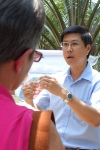 There are 16 types of vegetable oils and all are liquid except for one – palm oil, which is 50% liquid and 50% solid. A palm tree plant begins life in the
There are 16 types of vegetable oils and all are liquid except for one – palm oil, which is 50% liquid and 50% solid. A palm tree plant begins life in the UP (United Plantations) greenhouses where it remains for one year. As seedlings they are planted and after 3 years they will begin to produce palm fruit bunches. The lifetime of a palm tree is about 25 years, after which time they are cut down,chipped and composted back into the fields. There is no depletion of the soil, so a new crop of seedlings will be planted as the cycle begins again.
UP (United Plantations) greenhouses where it remains for one year. As seedlings they are planted and after 3 years they will begin to produce palm fruit bunches. The lifetime of a palm tree is about 25 years, after which time they are cut down,chipped and composted back into the fields. There is no depletion of the soil, so a new crop of seedlings will be planted as the cycle begins again.
At UP the quality of the soil is further enhanced through the planting of a leguminous ground cover to fix nitrogen. This leguminous cover crop planting during the early years also reduces the need for spraying with chemcials to keep the weeds down.
Integrated pest management (IPM) is an impressive part of the green credentials at UP. Companion planting of flowering weeds around the fields keeps pests away from the palm trees. Ingenious pheromone traps attract destructive adult rhinoceros beetles to a “bucket of no return”. Not only do human staff live in nice accommodation, but so do the barn owls! There are over 2,000 of these birds housed on the plantation who are expert and voracious rat catchers!
destructive adult rhinoceros beetles to a “bucket of no return”. Not only do human staff live in nice accommodation, but so do the barn owls! There are over 2,000 of these birds housed on the plantation who are expert and voracious rat catchers!
In reasonable amounts vegetable oils can be a healthy food. Palm oil contains no trans-fats and as an affordable food it is a necessity for the growing population in Asia, Africa and the poorer countries of the world.
The bio-gas reciprocating boiler and bio-gas plants will have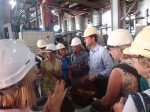 reduced emissions by 40%. in addition the boiler and plants supply the steam and power for the Unitara Refinery, thereby cutting costs as well as emissions of CO2. UP does not produce any biofuel for sale.- they are primarily committed to producing food).
reduced emissions by 40%. in addition the boiler and plants supply the steam and power for the Unitara Refinery, thereby cutting costs as well as emissions of CO2. UP does not produce any biofuel for sale.- they are primarily committed to producing food).
On the Jendarata Estate, 90% of the plantation is palm trees with 85% of the palm oil output dedicated to food production. Valuable organic fertilizer is made from waste products of oil processing and in so doing recycles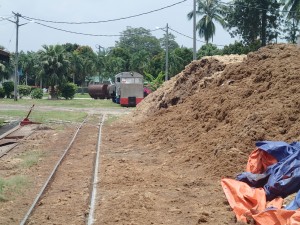 98% of the waste. 10% of the land use are coconut trees harvested and sold for use in the Malaysian coconut industry. A minimal side business is the production of tissue cultured plantlets of bananas. As well as the land assigned to palm and coconut trees within the estate, there are untouched areas of rain forest and jungle which UP is committed to preserving.
98% of the waste. 10% of the land use are coconut trees harvested and sold for use in the Malaysian coconut industry. A minimal side business is the production of tissue cultured plantlets of bananas. As well as the land assigned to palm and coconut trees within the estate, there are untouched areas of rain forest and jungle which UP is committed to preserving.
The day we visited the Jendarata Estate was actually a plantation holiday, but Carl as well as many of the workers agreed to come in and work at their diverse stations across the site in order to accommodate our tour group. We did not go home hungry, as an elaborate lunch was spread out in the dining area next to the pools. As well as not going home hungry, many if not all of our group of 30 left with a different opinion of palm oil.
Story and photos by Dennis Corrigan and Susan Sawyer

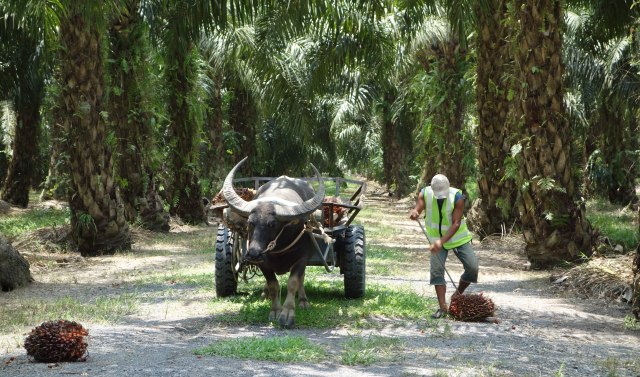
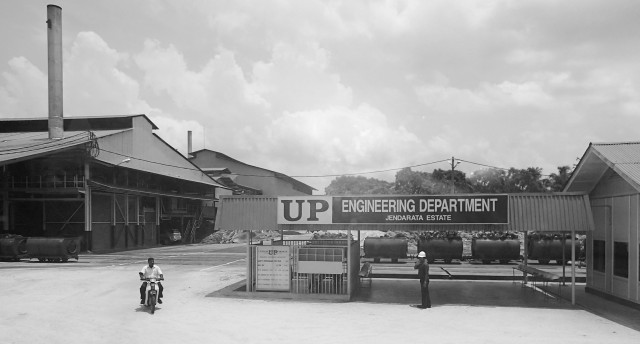
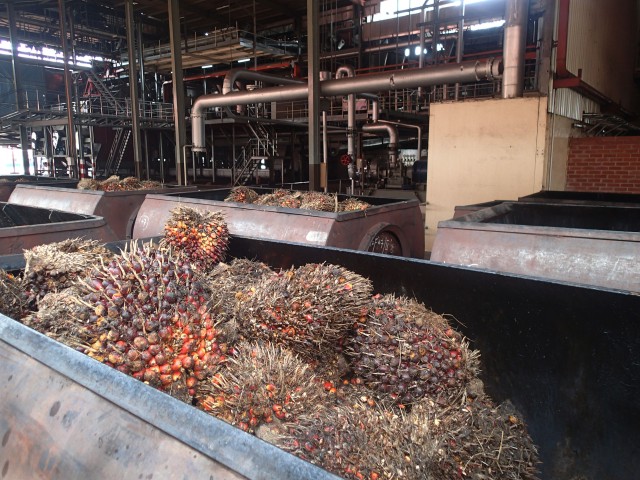

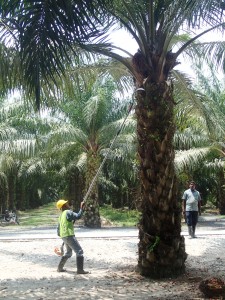
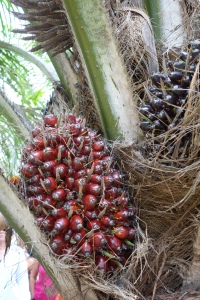
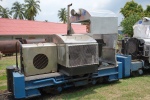
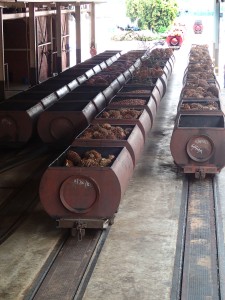

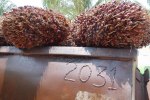
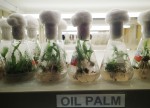

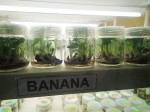
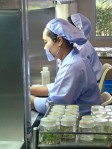


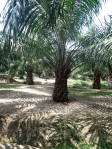
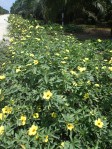

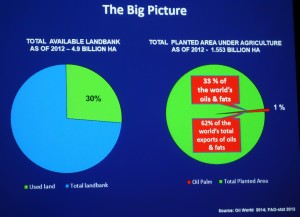
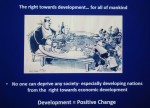
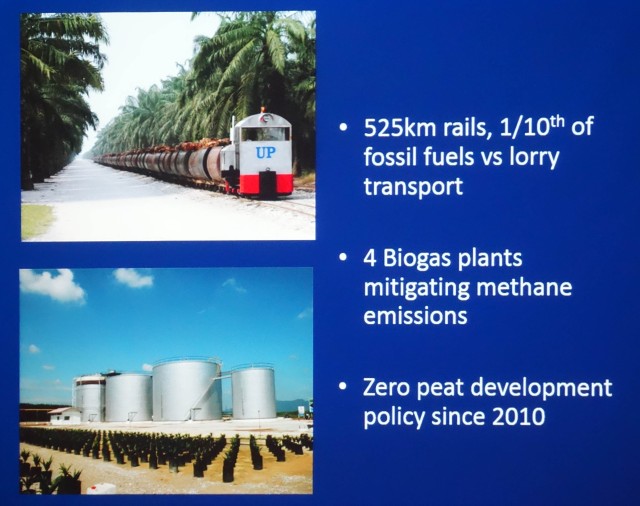
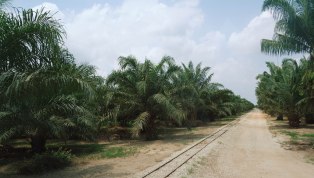

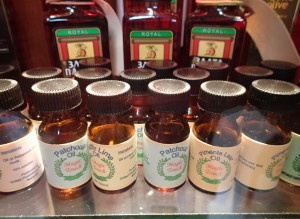
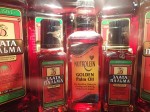
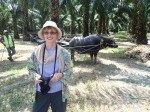
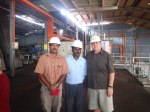
Not everybody is happy with how Malaysia is managing its biodiversity.
Malaysia in general is not doing such a great job managing its biodiversity but in the palm oil industry this particular company should be commended for their sustainability. UP are not here just for the dollar as some of the other, perhaps larger palm oil plantations are, but go the extra mile to make their product the best it can be even if it means less profits. UP does not seem to do regular tours of their plantation but you can request one and hopefully you will get the opportunity to see how this business is run. Highly recommended. Ask for Carl and tell him I sent you.